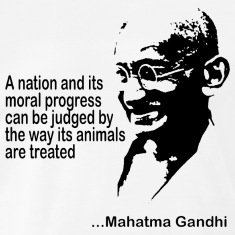Dr. Miftahul Islam Barbaruah
The framing of National Livestock policy has been under consideration of the Government of India since 1993 with the constitution of a High Powered Group under the Chairmanship of Dr. S.Z. Quasim, the then Member, Planning Commission. Subsequently, a series of national level workshops were held with the preparation of first Draft Paper on National Livestock Policy in the year 1996. The Draft Paper on National Livestock Policy was circulated to all States from time to time for comments which was concurred by States by and large. The present draft National Livestock Policy has been finalised and updated taking into account the comments from some States and the provisions of the National Policy for Farmers, 2007 approved by Government of India. The article highlights salient points of the policy document using the 6 “I” agricultural development framework.
Update: National Livestock Policy 2013 -Final
INPUT
Animals to farm with
- Focus on planned crossbreeding for genetic up-gradation, taking care of the need for conservation of animal bio-diversity, breeder involvement and availability of resources in chosen areas.
- Focus on selection / production and distribution of good quality ram / bucks / bulls.
Feed
- Emphasis on enrichment and densification of crop residues.
- Promotion of production of high yielding variety of coarse grains including maize.
- Strategic planning (including panchayat level land use planning ) for fodder seed, fodder production and rejuvenation of grazing lands.
- Recognition to importance of compound and balance feed.
Veterinary Services:
- Emphasis on dairy cooperatives as provider of breeding and veterinary services.
- Standardization and regulation of breeding services.
- Expansion of reach of state owned facilities to provide services but with appropriate system of recovery of cost wherever feasible.
- Participation of private sector in extension and service delivery ( curative as well as preventive )
INFRASTRUCTURE
- Focus on improvement of infrastructure use efficiency of existing infrasturctures through private sector participation ensuring cost recovery.
- Infrastructure building for increase in milk collection by organized sector (Presently about 16% of milk produced in the country is handled in organized sector)
- Setting up of infrastructure for disease diagnosis and quarantine facility.
- Setting up of large certified modern abattoirs and meat processing facility in private sector.
- Establishment of Veterinary colleges (in private sector) and training facilities to meet the man power need.
INVESTMENT
- Enabling environment for private sector investment in organized production and value adding activities.
INSTITUTION
- Strengthening of cooperatives.
- Support to smallholder backyard (non-commercial) poultry cluster / estate in rural areas (possible contract arrangement with corporate to be explored!)
- National Institutional mechanism (including legislations) to deal with animal bio-security.
- National institutional mechanism (Food Safety and Standards Authority of India) to regulate food of animal origin.
INNOVATION
- Local problem centric research and better coordination.
- Farmer leaders as recognized extension agents.
- Use of innovative tool for disease forecasting and management.
- Recognition to alternative system of medicine.
- Recognition to innovative actions aimed at reducing impact of farming activities on environment.
- Innovative actions aimed at bridging the data gaps to support planning, monitoring and evaluation of plans and programs.
INCENTIVE
- Steps to organize animal trade for better returns to farmers.
- Increase procurement by cooperatives to incentivise producing farmers.
- Credit support and revamping of livestock insurance.
- Creation of disease free zones as per OIE guidelines in areas with export potential.
- Synchronization of sanitary certification for export with global standards.
Note: Pictures used in this page are from open source.





